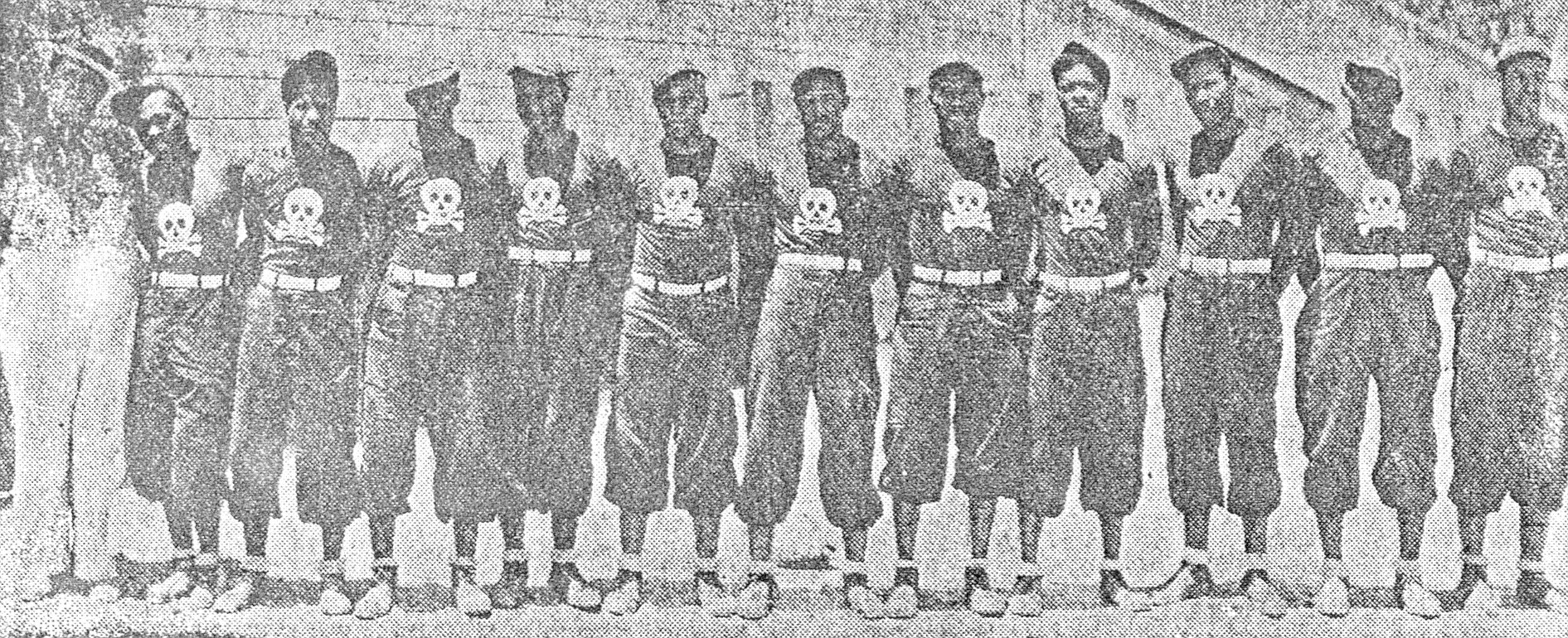Sioux City Ghosts
The Sioux City Ghosts were an all-black fast-pitch softball team. They started in Sioux City and began touring the United States, Canada, and Mexico during the 1930s, and played until 1956. Because of their pranks on the softball field, they were often compared to the famous Harlem Globetrotters. They were an important part of African-American society in Sioux City during the Great Depression of the 1930s.
The team started as a boys club in the West 7th Street neighborhood. That area of Sioux City was home to many African-American homes and businesses. This boys club started with about forty members in 1925 and began playing ball on the Hopkins School playground. Many of the boys were brothers and most players thought of their team as a family. Soon after forming, they became Sioux City’s Junior League Champions.
As the members of the team grew up they entered Sioux City’s Senior League and again won the Championship game. As they became well known in Sioux City, they received sponsorship from Jack Page. They wore uniform shirts with the team name – Jack-The Cleaners, but had no uniform pants. Instead, they wore whatever they owned, from jeans to bib overalls.
With the sponsorship of Jack’s, the softball team began playing in the tri-state area, but mostly in Iowa. As they toured, the nation was falling deeper into the Great Depression. Baseball and softball helped people forget about the poor economy, only if it was for a little while.
The Sioux City team was growing in popularity as it toured. By 1933 the old boys club was changing. First, they had a new name – the Sioux City Ghosts. Henry “Fats’ Fisher was their first manager. In 1933 they also had a new sponsor, Whitney Cleaners. On top of everything, they had new uniforms. A black shirt and pants with an orange skull and crossbones, they became symbols of the Ghosts
Fisher helped the Ghosts become even more popular. Both the softball and newly formed basketball teams were successful. In 1934, Fisher convinced the Ghosts to tour in California, but only after their Iowa tour was complete. They immediately had success in California with a few improvised comedy routines on the field.
At the start of the 1935 season the team began concentrating on the comedy routines and pranks for their games. The Ghosts favorite routines were shadow ball and in-field. They were “now you see it, now you don’t” routines, that the fans loved. The players also improvised some actions like running from second base to first base: the Ghosts called that stealing first. Sometimes they pitched melons instead of softballs and rode bicycles in the outfield.
These routines did not mean that the Ghosts’ record suffered. They often played the best serious amateur teams some cities had, like farm leagues, all-star teams and state champions. The Ghosts still won over 2,000 games and lost less than 100 in twenty years of play. They played other big name teams of the time, including the Henry Armstrong Hurricanes and the Joe Louis Brown Bombers. The Ghosts even challenged the Harlem Globetrotters’ softball team to a game, but it was never played.
The Ghosts toured all over the Western United Stated and played in Las Vegas, Phoenix, and San Francisco. Some of the Ghosts’ games attracted huge audiences. In Vancouver, Canada, 26,000 came to watch the game. One of the Ghosts said we played in a field for fifty people, but played as well as if there had been 50,000. They were true showmen.
Life was not always perfect or the Ghosts. Many of the better players tried to move into the professional leagues, but couldn’t because they were black. The team also had to break up at the beginning of the Second World War when many of the players entered the armed forces.
The Ghosts helped put Sioux City on the map and acted as representatives of Iowa in far-off states and countries. When the Ghosts reformed after World War Two, players from other teams were added, but team always stayed a mostly Sioux City team.
In the late 1980s the members of the team were recognized when they were inducted into the Iowa Amateur Softball Association Hall of Fame. They also helped dedicate Kirk Hanson Park in Riverside in the 1990s.
Ghosts’ Members 1933-1956:
L.J. “Bambino” Favors
Richard “Sitting Bull” Fields
“Oatie” Fields
Riley Fields
Willie Lee
Glenn Smith
Lawrence Freeman
Floyd “Fuji” Fulton
Benny Hamilton
Jamie Hicks
Clarence “Darby” Hicks
Rudy Lee
Major Ray
Fred Tolson
Robert Green
Vivian Johnson
Clayton Johnson
Bob Metcalf
Sam Davis
J.C. “Cool Papa” Johnson
Valse “Mickey Mouse”Metcalf
George “Smokey Joe” Murhpy
Harold “Speedy” Williams
Reginald “Cricket” Williams
Frank “Papa Be Kind” Williams
Sam Hays
Benny Hamilton
Les “Spook” Wilkinson
Sources:
Schoenherr, Julie. “Sioux City Ghosts” The Briar Cliff Review. Spring 1997.
Sioux City Ghosts. http://www.americanhistory.si.edu/archives/d9634.htm
Sioux City Ghosts. SC55 Sioux City Public Museum.

